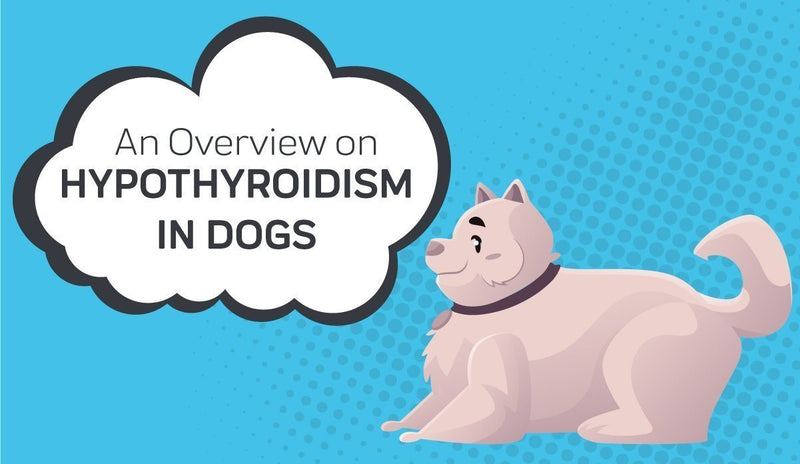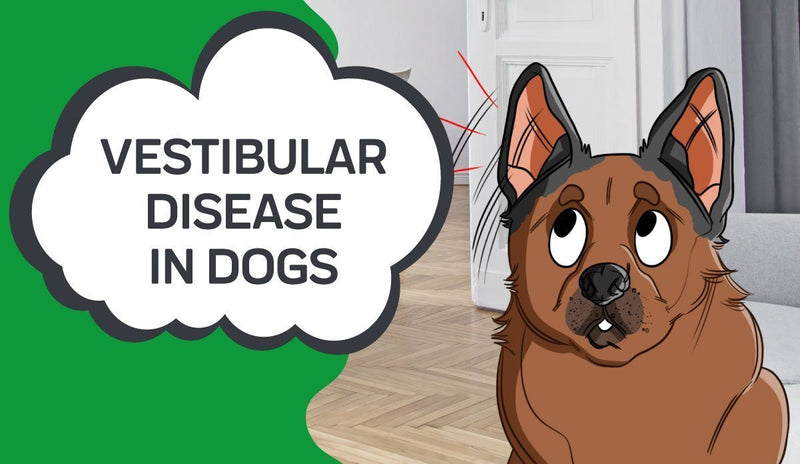- What Are the Symptoms of Hyperthyroidism in Cats?
- How Is Hyperthyroidism Diagnosed in Cats?
- How to Treat Hyperthyroidism in Cats
- Health Conditions Associated with Hyperthyroidism
- What Breeds/Ages of Cats Are At Risk From Hyperthyroidism?
- How To Keep Your Cats Safe From Hyperthyroidism
Hyperthyroidism is one of the most common diseases in cats. In fact, it’s the most prevalent glandular disease to affect our feline friends.
All cats have two thyroid glands located in their neck, and these play an essential part in regulating their metabolic rate. Hyperthyroidism, also known as thyrotoxicosis, is characterized by an increase in thyroid hormones (T3 and T4), which causes an increase in metabolic rate.
Because these hormones affect many other organs in the body, hyperthyroidism is often the cause of felines’ health problems.
Here, we’ll outline everything you need to know about this condition, including signs of hyperthyroidism, symptoms, and treatments.
What Are the Symptoms of Hyperthyroidism in Cats?
The most common symptom of hyperthyroidism is weight loss, and increased thyroid hormones cause it. Between 95 and 98% of cats with hyperthyroidism display weight loss, most often due to muscle wasting.
Note that weight loss does not necessarily mean that your pet will be underweight, but will have lost a significant amount of weight relative to their normal weight.
Alongside weight loss and an increase in appetite, other signs of hyperthyroidism include:

How Is Hyperthyroidism Diagnosed in Cats?
Due to the fact that cats with hyperthyroidism tend to be older, they often have concurrent illnesses such as inflammatory bowel disease, diabetes, and kidney failure. These can be caused or exacerbated by increased levels of thyroid hormones from the thyroid gland.
Many of the signs of hyperthyroidism overlap with these diseases' symptoms, making diagnosis complicated. This means that a number of tests and examinations are generally needed to diagnose a hyperthyroid cat.
Here’s how veterinarians typically conduct the diagnosis:
Physical Examination
When a feline with suspected high thyroid hormone levels is taken to the vet, a veterinarian will start by conducting a physical examination. This involves palpating the neck area to see whether an enlarged thyroid gland or any abnormal thyroid tissue can be detected. They may also check the cat’s blood pressure and heart rate.
T3 and T4 Analysis
If the veterinarian believes there may be a problem with the cat’s thyroid gland, they’ll likely order an analysis of T3 and T4 hormone levels, as well as blood tests.
While most cats with hyperthyroidism will have a higher than normal level of thyroid hormone T4, a small number of cats with hyperthyroidism will still be within the normal range for T4.
A feline with a suspected thyroid problem that displays normal levels of T4 may need additional testing.
Urine and Blood Test
Because hyperthyroidism can cause other conditions, it’s important that the cat’s general health is checked when there is a problem with the thyroid glands and/or high thyroid hormone levels.
A urinalysis and complete blood test set should provide the veterinarian with enough information to build a picture of your pet’s overall health. Particular attention should be paid to the kidneys and heart, as the high levels of thyroid hormones caused by hyperthyroidism often predispose them to issues with these organs.
How to Treat Hyperthyroidism in Cats
There are a number of different treatments for hyperthyroidism available. The most appropriate treatment depends on individual circumstances involving both the cat and the owner.
Their overall health is the main factor in determining the best treatment path. Meanwhile, the financial situation and ability to medicate the feline regularly are important considerations, too.
Feline thyroid problems can be treated in the following ways:
- Surgical removal of the thyroid glands
- Medication to control thyroid hormone levels
- Radioactive iodine therapy to target the thyroid gland
- Dietary therapy to help control thyroid hormone levels
In this section, we’ll take a look at each treatment option in more detail, including information about which kind of treatment is most appropriate in different situations, and whether radioactive iodine therapy could be the best solution for targeting abnormal thyroid cells without impacting the cat’s overall health.
Surgery
Hyperthyroid cats can undergo surgical removal of their thyroid glands. This is known as thyroidectomy and is a relatively simple surgical procedure to remove all thyroid tissue. It has a strong success rate, with more than 90% of felines achieving euthyroidism (normal thyroid function) after the operation.
Advantages of Surgery for Hyperthyroidism
One of the big advantages of surgery is that, if successful, it results in a permanent cure for the majority of felines. It thus eliminates the need for lifelong medication, and the animal can go on to have a normal, happy life.
Risks of Surgery for Hyperthyroidism
As with all surgery, there are risks associated with the thyroidectomy operation. One of the biggest risks is accidental damage to the parathyroid glands during surgery to remove thyroid cells, which are extremely close to the thyroid glands and essential in keeping blood calcium levels stable.
This surgery also requires your pet to have general anesthesia, and there could be additional associated risks if the feline has other health issues with their heart or kidneys.
Alternative Treatments for Older Cats
It’s also worth noting that other treatments, such as radioactive iodine therapy and medication, effectively treat the disease. We’ll go on to look at these below, but since they’re less invasive forms of treatment, they tend to be better for older animals.
Due to the fact that the majority of hyperthyroid cats are elderly, surgery is not often chosen as a treatment for this condition.
Medication
Medications for hyperthyroidism do not ‘cure’ hyperthyroidism, but manage the symptoms and provide long-term control of the disease.
Anti-thyroid medications work by lessening the production and release of the thyroid hormones T3 and T4 from the thyroid gland. They are available as oral medications or a gel that can be applied directly to the skin.
Advantages
Medication is a good option for dealing with high thyroid hormone levels in felines because it’s straightforward, and the medication is usually inexpensive and readily available. It’s also suitable for the vast majority of patients, so it’s one of the more popular treatment options.
Risks
The disadvantages are the side effects that your pet may experience. These include fever, vomiting, lethargy, and anorexia. Treatment is also generally for the rest of the cat’s life, and owners may struggle to keep up with the twice-daily dosage schedule.
Regardless of whether the cat is treated with a gel or oral medication, their health should be regularly reviewed with blood tests by a veterinarian to make sure the treatment is proving effective. This also provides an opportunity to check thyroid hormone levels and any negative side effects of the medication and monitor kidney function in at-risk animals.
Radioactive Iodine Therapy
During radioactive iodine therapy, the feline receives radioactive iodine injection, which is quickly absorbed into the cat’s bloodstream.
Iodine is required by the thyroid cells to produce thyroid hormones T3 and T4, so when the radioactive iodine is taken up by the thyroid from the cat’s blood, the radiation kills any abnormal thyroid tissue. It does not destroy any healthy thyroid tissue and avoids damaging the parathyroid glands.
Advantages
Because radioactive iodine therapy can effectively cure hyperthyroidism without running the risk of surgery, it’s widely considered the best option available. Most cats treated in this way achieve normal hormone levels and a reduction in abnormal thyroid cells within just a few weeks of treatment. There are no known side effects of radioactive iodine treatment, and it doesn’t require anesthesia.
Disadvantages
This therapy is not as widely available as other options because it requires the injection of a radioactive substance.
Radioactive iodine therapy can only be carried out in accredited facilities with a license to use radioisotopes. And, while the radioactivity is not through the cat's effect, anyone in contact with the cat needs to take precautions during the time after treatment.
A cat treated with radioactive iodine therapy will be kept in the facility until its radiation levels return to a normal range – this could take between three and five days.
Dietary Therapy
The last treatment for hyperthyroidism that we’ll cover is dietary therapy.
Feeding your feline an iodine limited diet can help control hyperthyroidism's clinical signs and lower thyroid hormones concentrations in the cat’s blood. This is not medicated food, nor is it a totally iodine-free diet. Rather, it’s a diet with a precisely limited content of iodine.
This kind of prescription diet only works when your pet eats only the prescribed food. This means they cannot have additional treats or snacks at any time.
Is This Option for My Feline?
This option is best suited to cases where no other treatment option is possible, due to age, frailty, or other medications being taken.
It’s also thought that there may be long-term effects of restricting iodine on the overall health of felines, which could ultimately make hyperthyroidism worse.
However, research into the success and viability of iodine-restricted diets for felines is ongoing, so it’s something you could discuss with your animal care provider if no other option is suitable.
Health Conditions Associated with Hyperthyroidism
The thyroid glands are important in controlling many functions in the body, as thyroid cells secrete hormones. So, when a cat has hyperthyroidism, they may also develop secondary health problems. Two of the most common are high blood pressure and heart disease.
High Blood Pressure
High blood pressure, commonly referred to as hypertension, can damage a number of organs, including the heart, brain, kidneys, and eyes. When it is concurrent with hyperthyroidism, the cat will likely need additional medication to control blood pressure. However, when hyperthyroidism is successfully treated, hypertension is often also resolved.
Heart Disease
Heart disease often occurs with hyperthyroidism. When there are elevated levels of thyroid hormones T3 and T4 in the bloodstream, it can increase the heart rate and thickening of the left ventricle when left untreated. This may result in heart failure, as the normal function of the heart is compromised.
Therefore, hyperthyroid cats sometimes need additional medication and/or treatment for secondary heart disease. As with hypertension, heart problems often improve- and are sometimes even fixed - when the underlying high thyroid hormone levels are controlled and treated.
What Breeds/Ages of Cats Are At Risk From Hyperthyroidism?
Unfortunately, hyperthyroidism can affect felines of any breed and sex.
The biggest risk factor for hyperthyroidism in cats is age, with older cats much more likely to be affected. It’s less common for younger cats, and according to the ASPCA, less than 6% of cats diagnosed with hyperthyroidism are younger than ten years of age. The average age of cats at diagnosis is 12-13 years.
While not considered risk factors in the diagnosis of high thyroid hormone levels in felines, it’s interesting to note that factors other than age may be linked to the disease. According to one recent study, longhaired cats and those of non-purebred descent are at greater risk of hyperthyroidism.
How To Keep Your Cats Safe From Hyperthyroidism

Unfortunately, there are no known methods of preventing hyperthyroidism in felines at this time. However, early diagnosis has been shown to improve the treatment options available as well as the overall prognosis, and it can decrease the effects of any secondary health issues such as heart disease.
For this reason, all older cats (or cats considered middle-aged to senior age) should have regular check-ups with their veterinarian. 6-monthly check-ups for a physical examination are a good method of detecting any thyroid tissue abnormalities early.
Additionally, annual blood tests and urinalysis will highlight high thyroid hormone levels as well as any other health problems, and help you get them treated before serious health conditions arise.
Sources:
Breed, Coat Color, and Hair Length as Risk Factors for Hyperthyroidism in CatsDiagnosis and Management of Feline Hyperthyroidism
Evaluation of Body Weight, Body Condition, and Muscle Condition in Cats with Hyperthyroidism
Guidelines for the Management of Feline Hyperthyroidism
Hyperthyroidism in Cats
Cat Hyperthyroidism (Overactive Thyroid)
Symptoms of Feline Hyperthyroidism

















